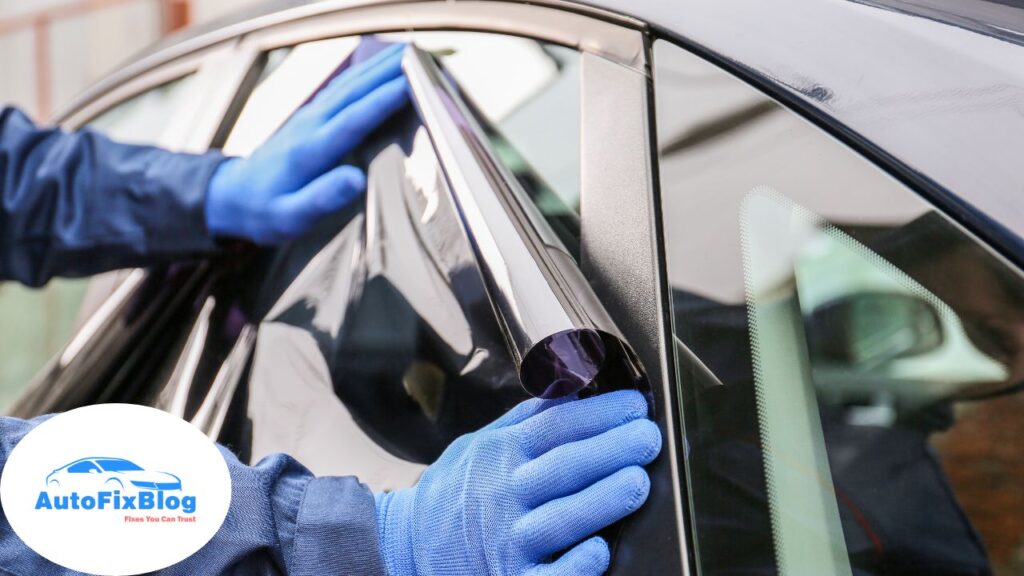As electric vehicles (EVs) continue to dominate the roads, drivers are becoming more conscious of energy efficiency and comfort. One popular modification for cars, including EVs, is window tinting. While tinting has aesthetic appeal, many drivers wonder: does tint help car A/C in EV cars? This article delves into how tinting impacts temperature regulation, energy consumption, and overall comfort in electric vehicles.
Understanding Window Tinting
Window tinting involves applying a thin film to a car’s windows to reduce the amount of sunlight and heat entering the cabin. This film is designed to block harmful UV rays, reduce glare, and, most importantly, minimize heat gain in the vehicle’s interior. For EV owners, where maximizing battery efficiency is key, tinting could be more than just a cosmetic upgrade.
The Role of A/C Systems in EVs
Electric vehicles rely on battery power for nearly all operations, including their air conditioning systems. Unlike traditional gasoline-powered cars, EVs don’t have a surplus of engine heat to power the A/C. Instead, the A/C system directly draws energy from the battery. This makes efficient temperature regulation critical for extending the EV’s range.
When the cabin gets too hot, the A/C system must work harder, consuming more power and potentially reducing the vehicle’s range. This leads to the recurring question: does tint help car A/C in EV cars by making temperature management more efficient?
Tinting and Temperature Control
Window tinting plays a significant role in temperature regulation by reducing solar heat gain. Studies show that high-quality tints can block up to 50-65% of solar heat, depending on the type and brand of the film. For EV owners, this means:
- Reduced Interior Heat: Tinted windows prevent the cabin from turning into an oven under the sun, maintaining a cooler interior even when parked.
- Decreased A/C Usage: A cooler cabin requires less effort from the air conditioning system to maintain a comfortable temperature.
- Prolonged Battery Life: By reducing A/C usage, tinting indirectly helps conserve the EV’s battery life, allowing for longer drives and better range efficiency.

How Does Tint Help Car A/C in EV Cars Specifically?
EVs are particularly sensitive to factors that influence battery performance. Here’s a detailed look at how tinting helps:
- Energy Savings: When the A/C system works less to cool the cabin, it draws less energy from the battery. This improves overall efficiency and extends the vehicle’s range.
- Consistent Cooling: Tinted windows ensure that the cabin stays consistently cooler, reducing the strain on the A/C to combat fluctuating interior temperatures.
- Enhanced Comfort: Passengers benefit from a more pleasant interior environment without the discomfort of excessive sunlight and heat.
Given these benefits, the answer to does tint help car A/C in EV cars is a resounding yes. However, not all tints are created equal, so it’s essential to choose the right type for maximum efficiency.
Choosing the Right Tint for Your EV
When selecting window tinting for your electric car, consider the following factors:
- Heat Rejection Rating: Look for tints with high infrared (IR) rejection to maximize heat-blocking benefits.
- UV Protection: Choose a film that blocks at least 99% of UV rays to protect passengers and the car’s interior.
- Legal Compliance: Each region has specific regulations regarding tint darkness. Ensure your choice meets local laws.
- Professional Installation: Proper installation is critical for achieving the desired results. Always opt for experienced professionals to apply the tint.
By choosing the right tint, you can maximize the benefits for your EV and its air conditioning system.
Additional Benefits of Tinting in EVs
Beyond the question of does tint help car A/C in EV cars, tinting provides other advantages:
- Privacy and Security: Tinted windows make it harder for outsiders to see into your car, offering enhanced privacy and reducing the risk of theft.
- Interior Protection: By blocking UV rays, tints prevent fading and cracking of interior materials like leather, fabric, and plastics.
- Reduced Glare: Tinting minimizes glare from sunlight and headlights, improving driving visibility and safety.
- Eco-Friendly Impact: By reducing the energy demand on your EV’s A/C system, tinting indirectly contributes to a smaller carbon footprint.
Potential Downsides of Tinting
While tinting offers many benefits, it’s important to consider potential downsides:
- Cost: High-quality tinting and professional installation can be pricey, but it’s a worthwhile investment for the benefits it provides.
- Reduced Visibility at Night: Dark tints might make it harder to see in low-light conditions, so balance is key.
- Peeling or Bubbling: Poor-quality tints or improper installation can lead to peeling or bubbling over time.
For EV owners, tinting is a practical solution to enhance comfort, energy efficiency, and vehicle performance. By reducing heat gain and minimizing the workload on the A/C system, tinting can extend battery life and improve driving range. With the right tint and professional installation, EV drivers can enjoy cooler cabins, lower energy consumption, and a more pleasant driving experience.
So, if you’re still wondering does tint help car A/C in EV cars, the answer lies in the evidence: yes, it does—and the benefits are hard to ignore. Whether you’re looking to save energy, increase comfort, or simply protect your car’s interior, tinting is a smart choice for any EV owner.



